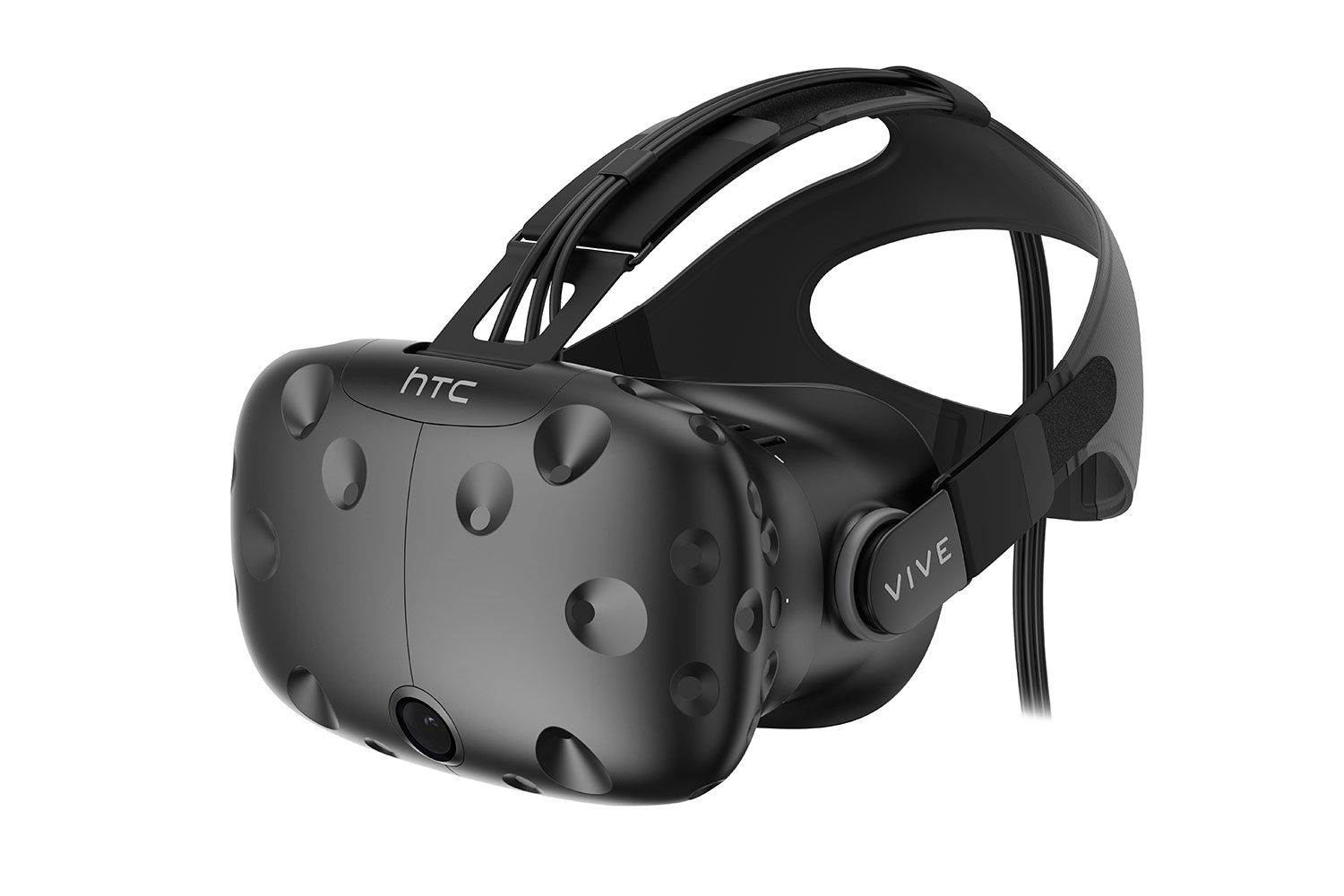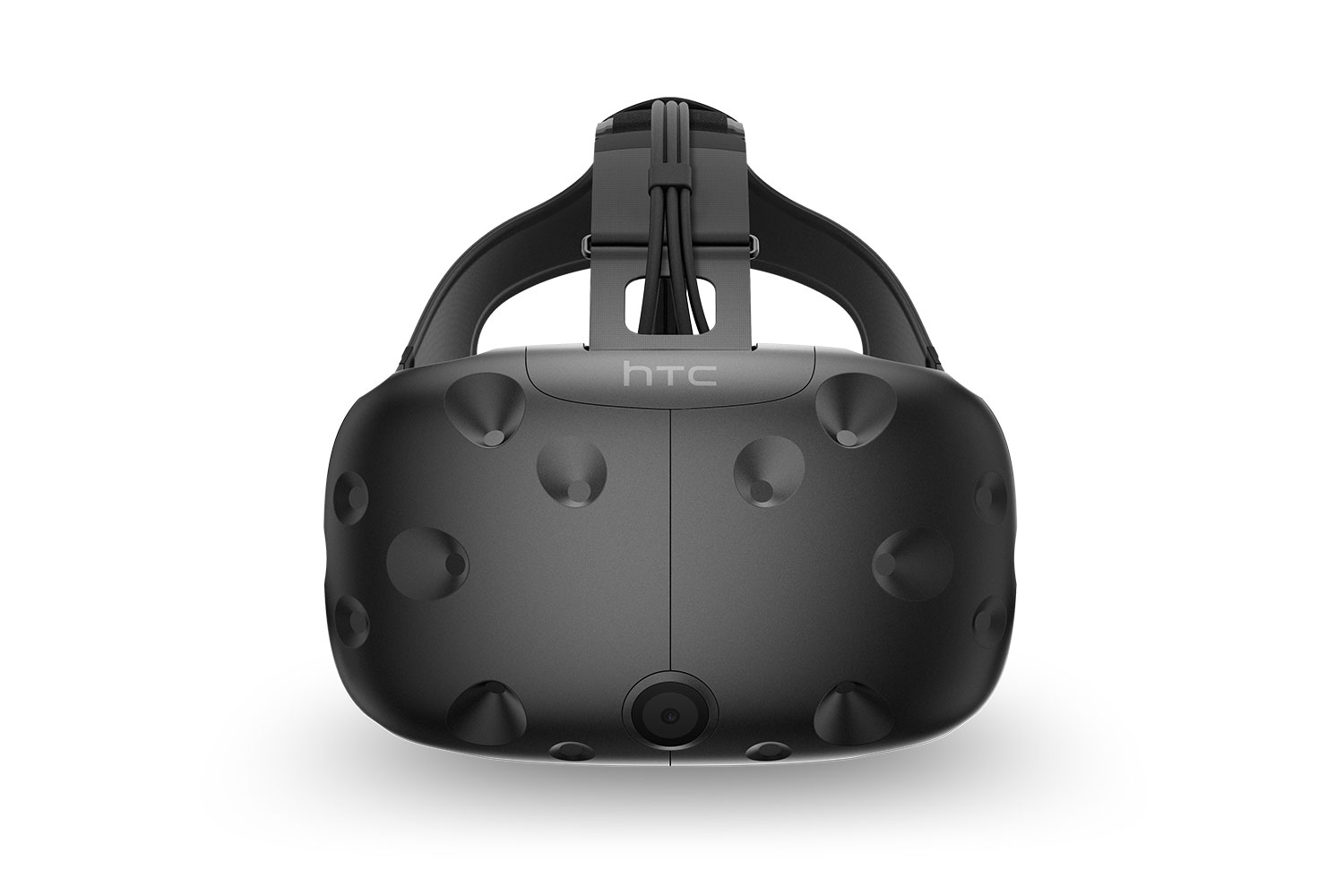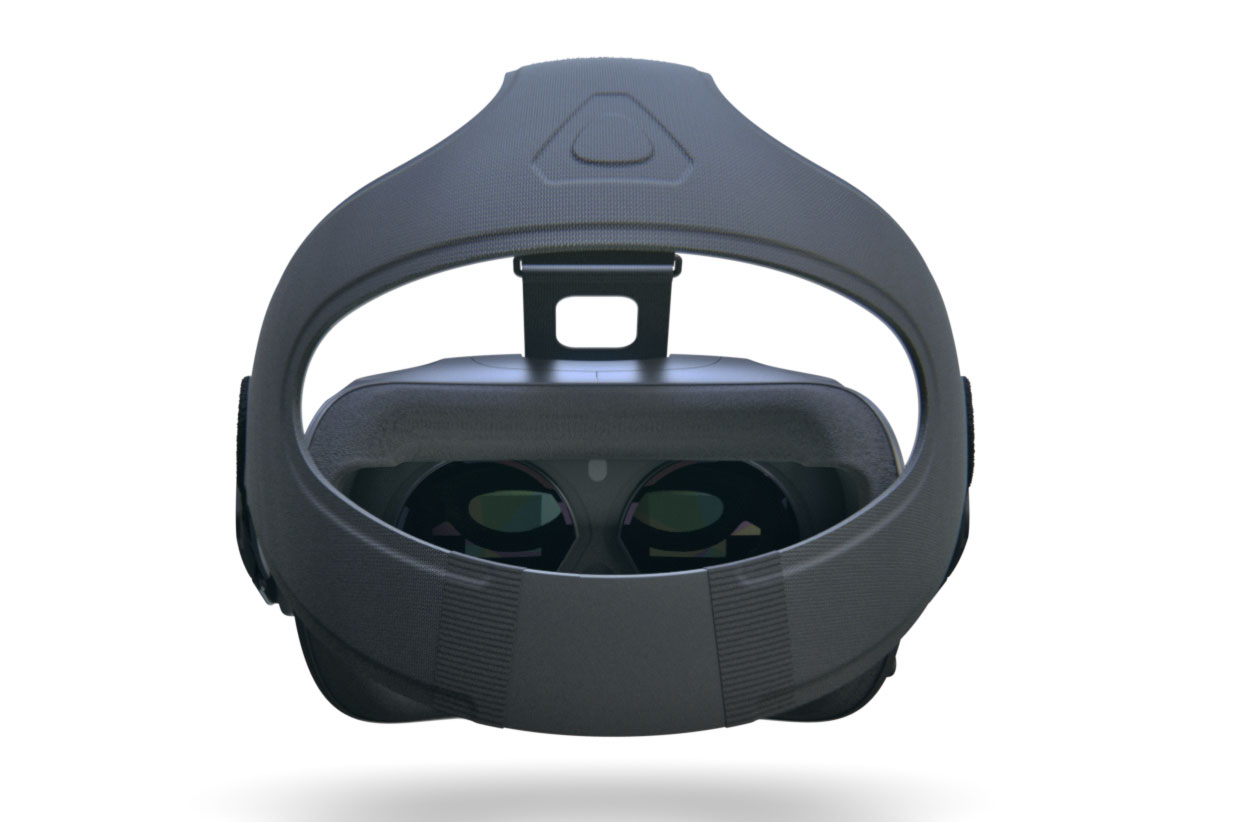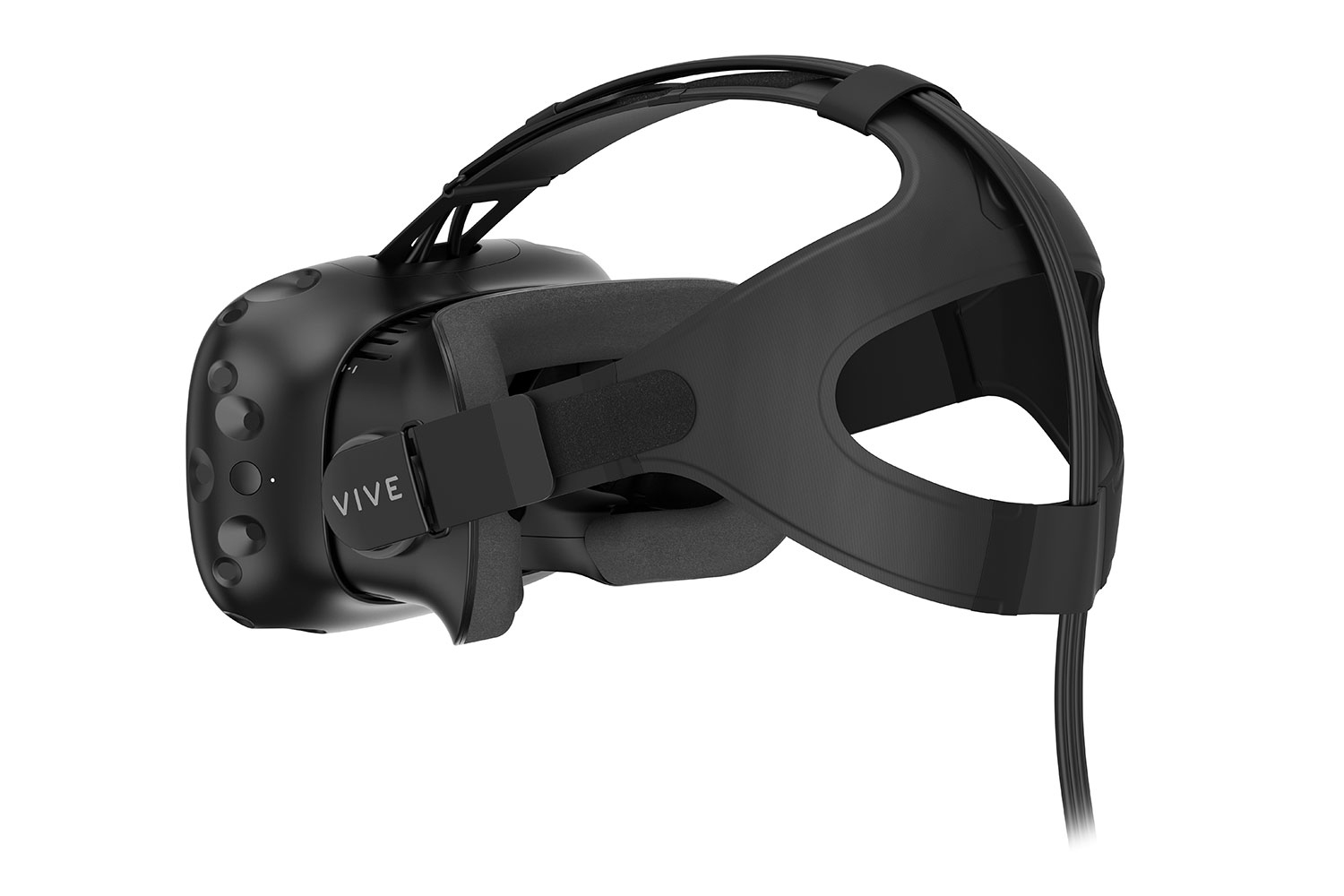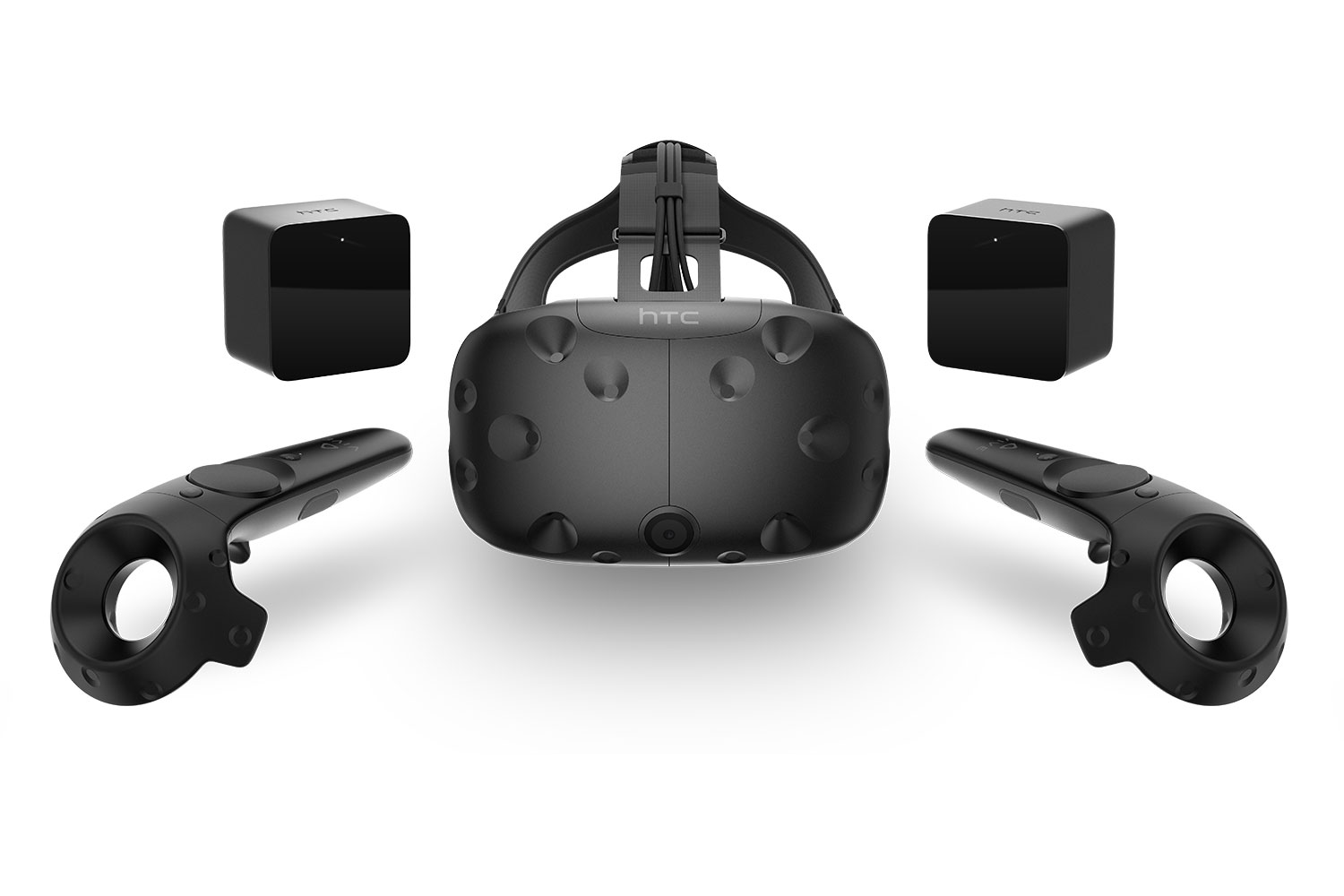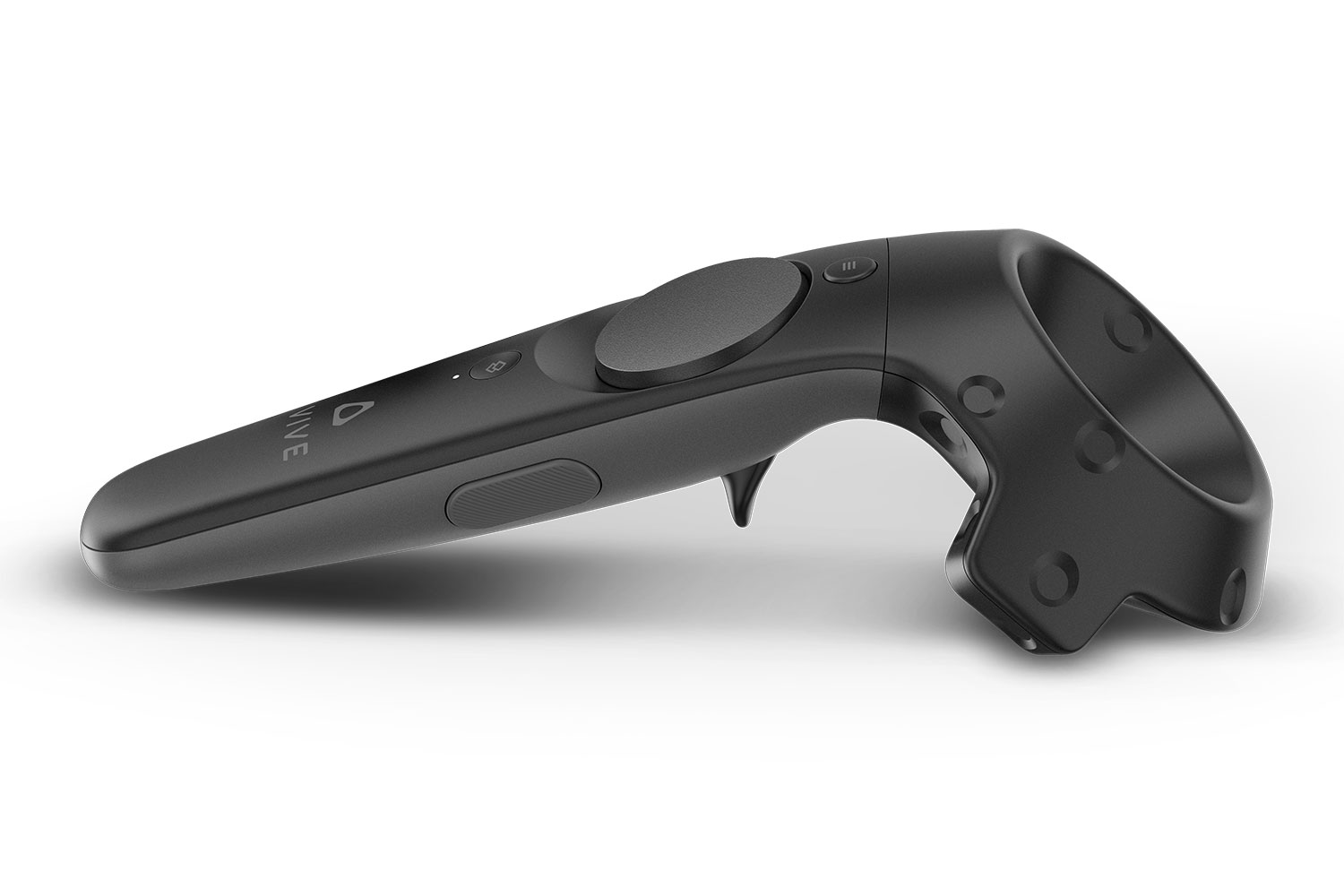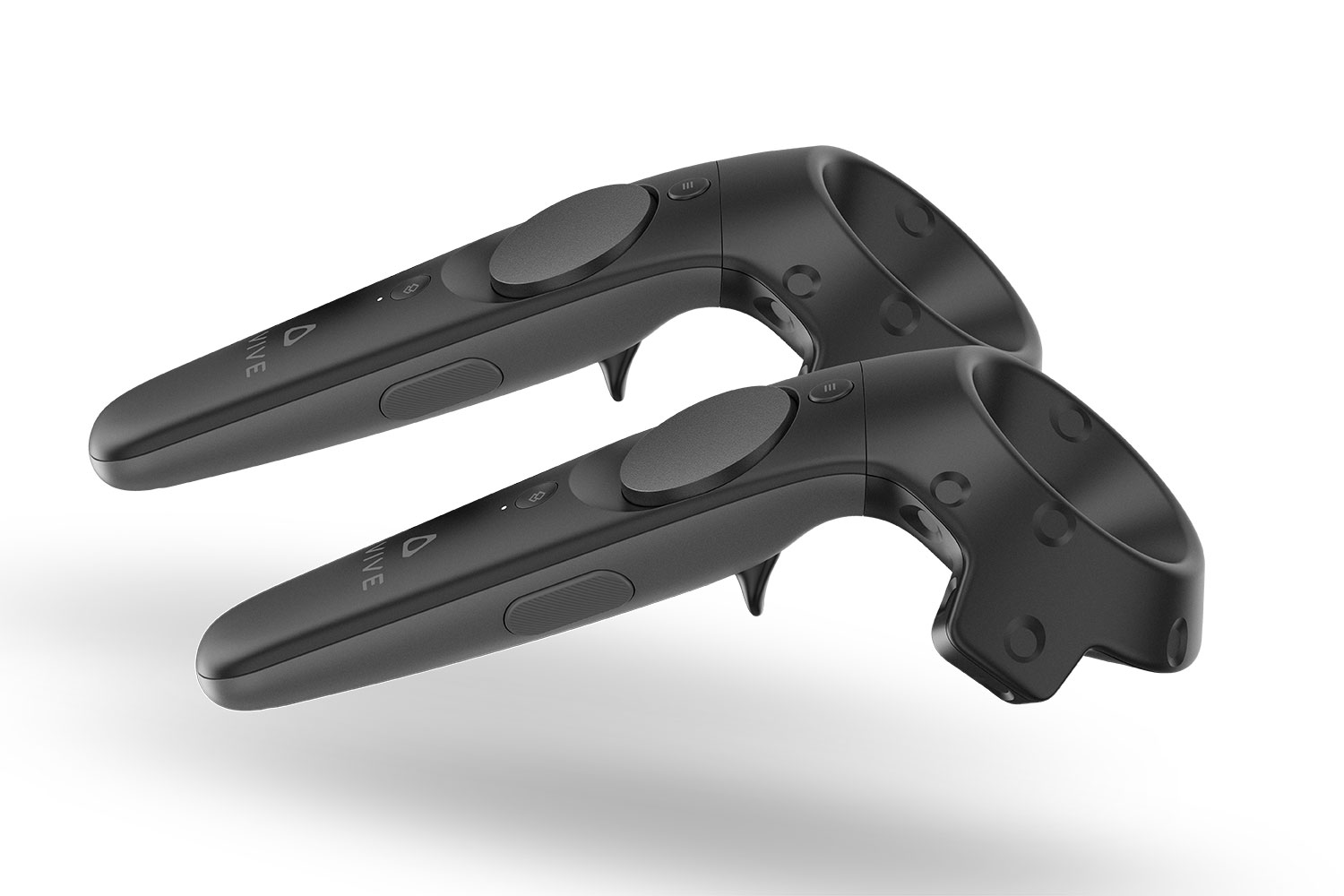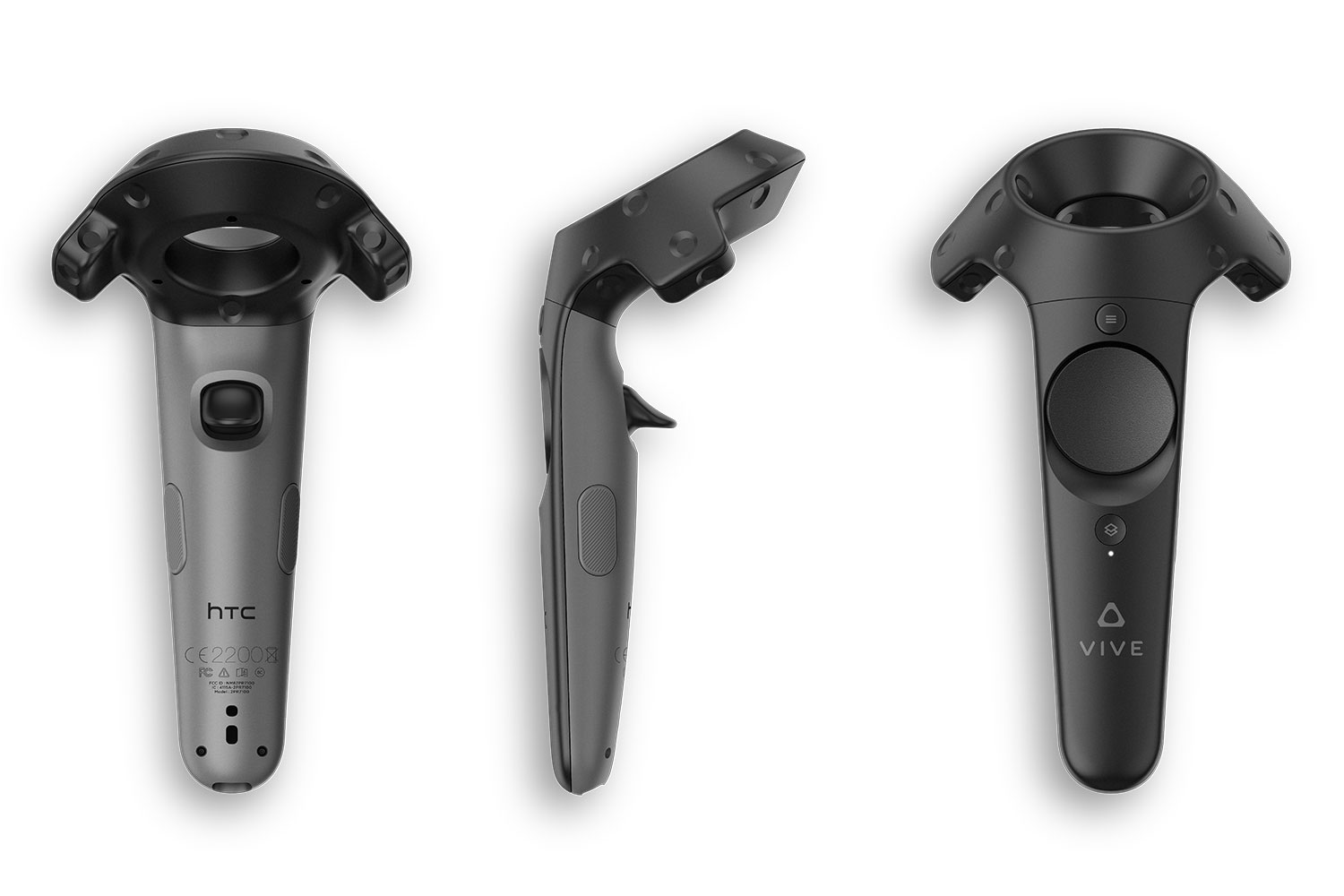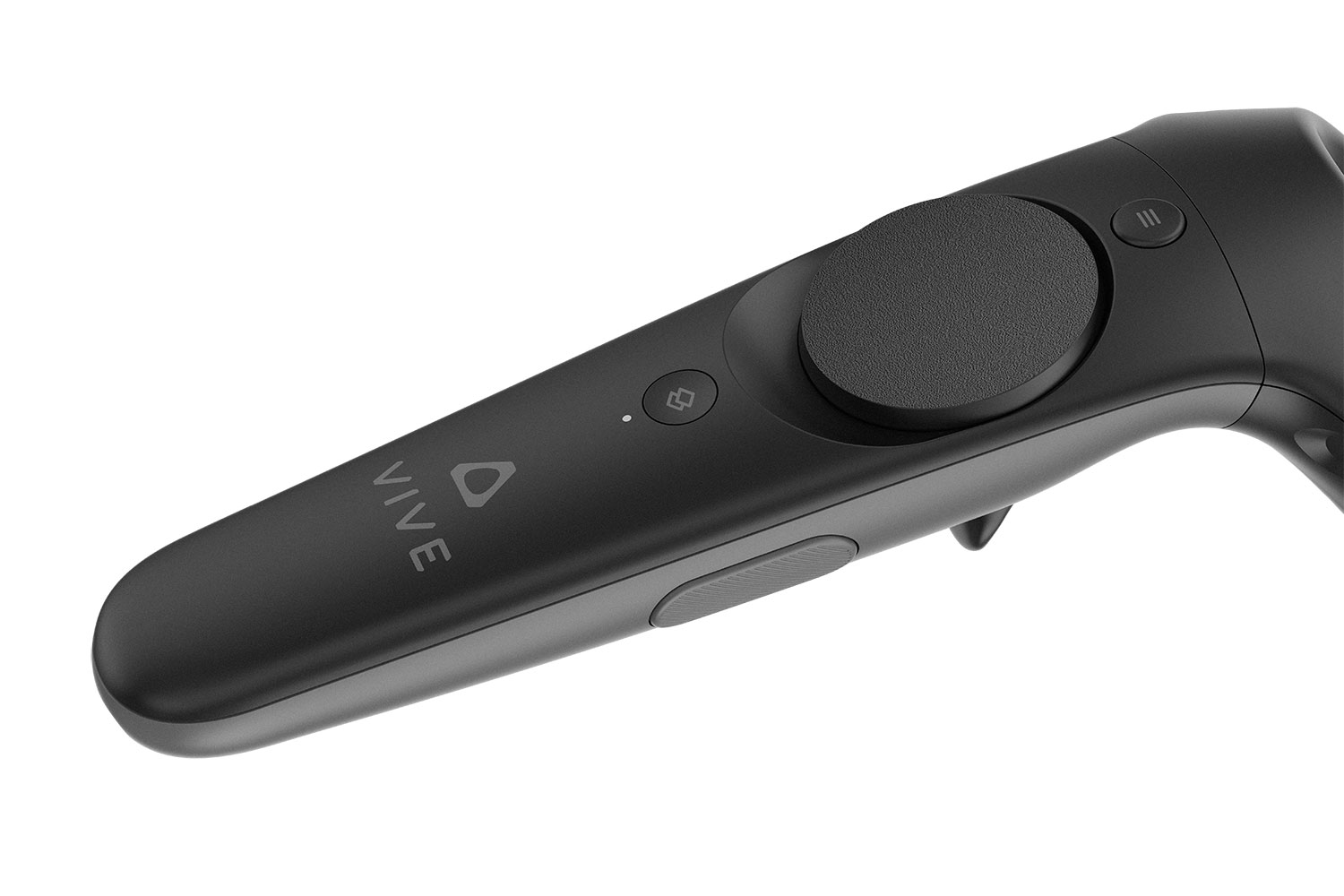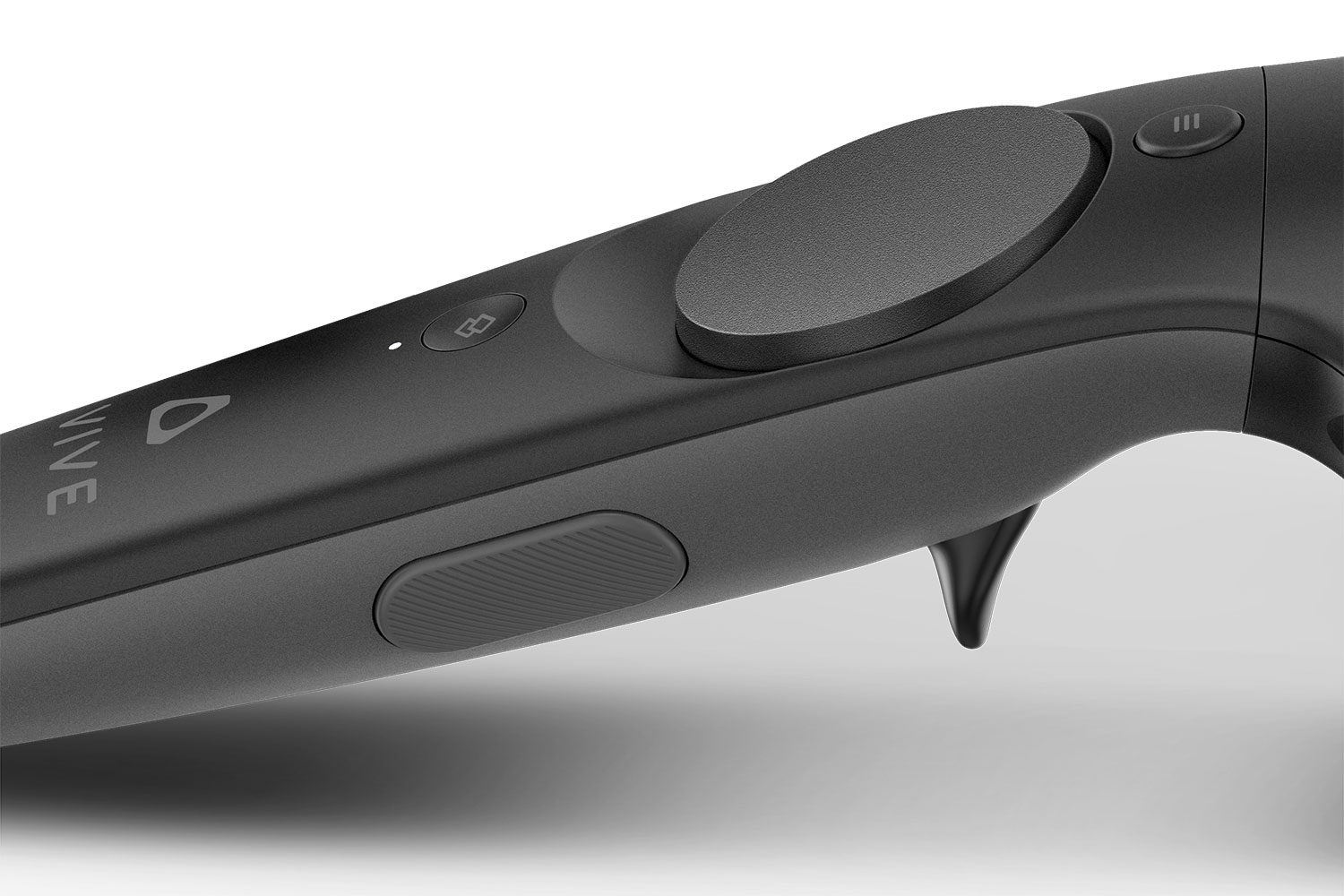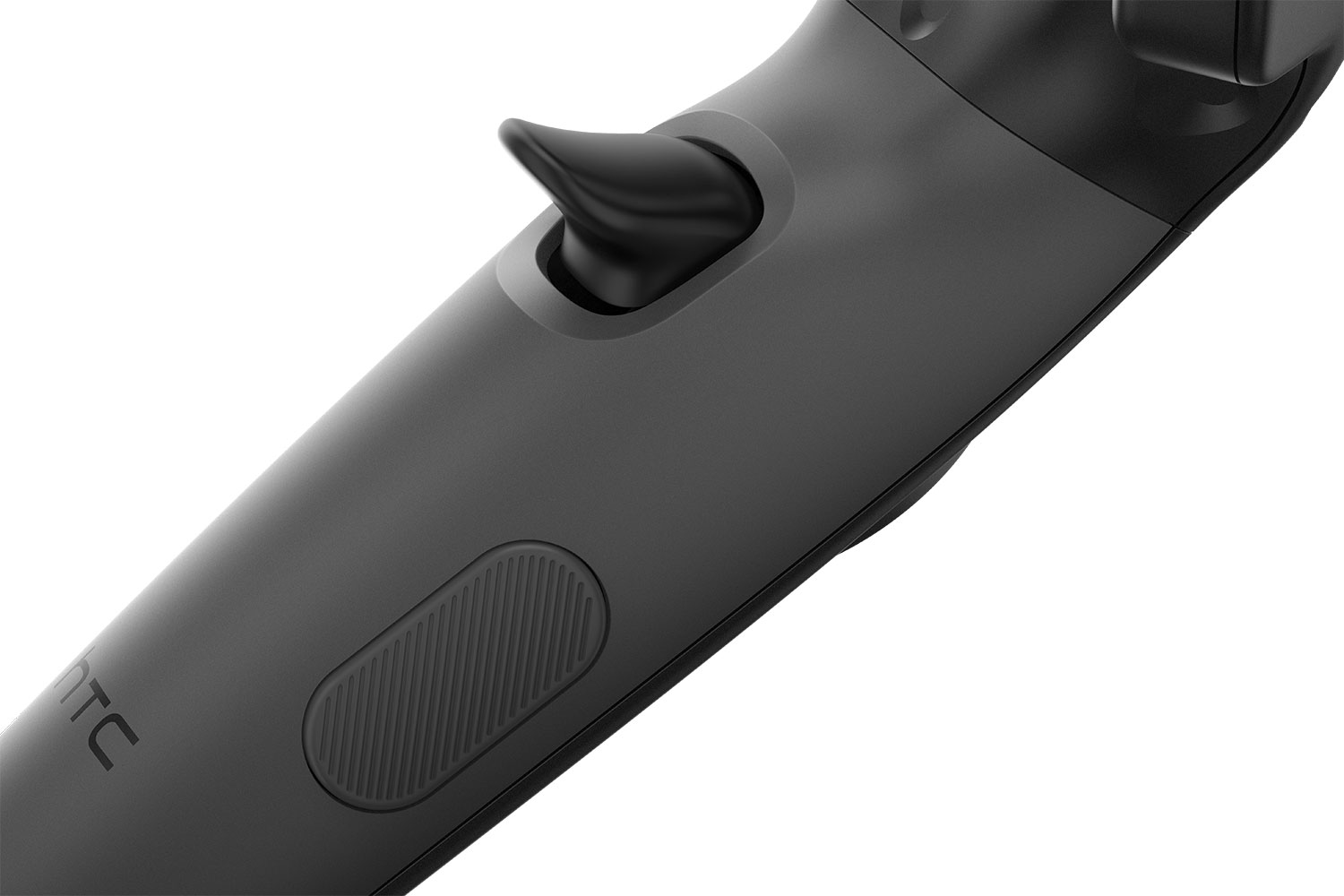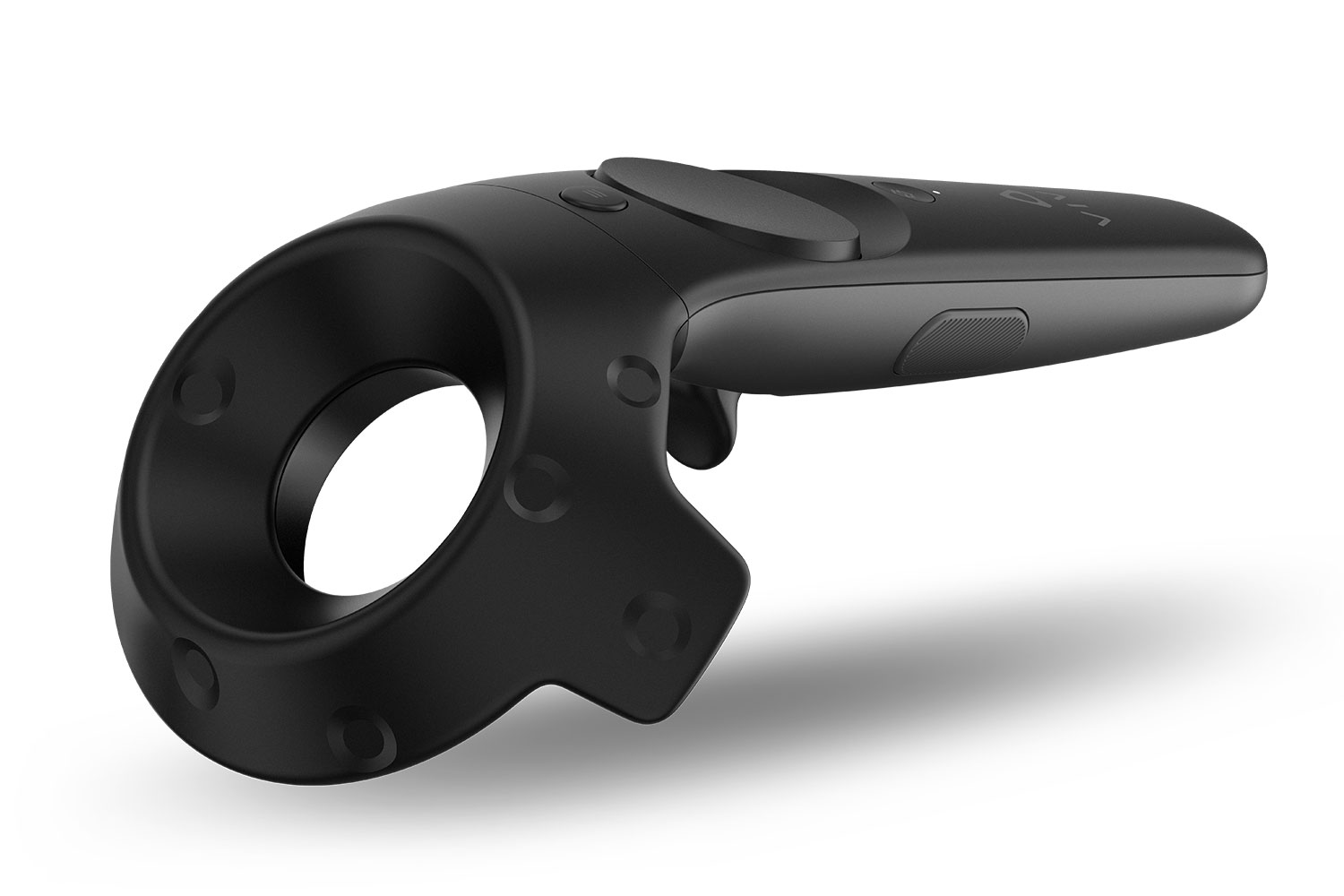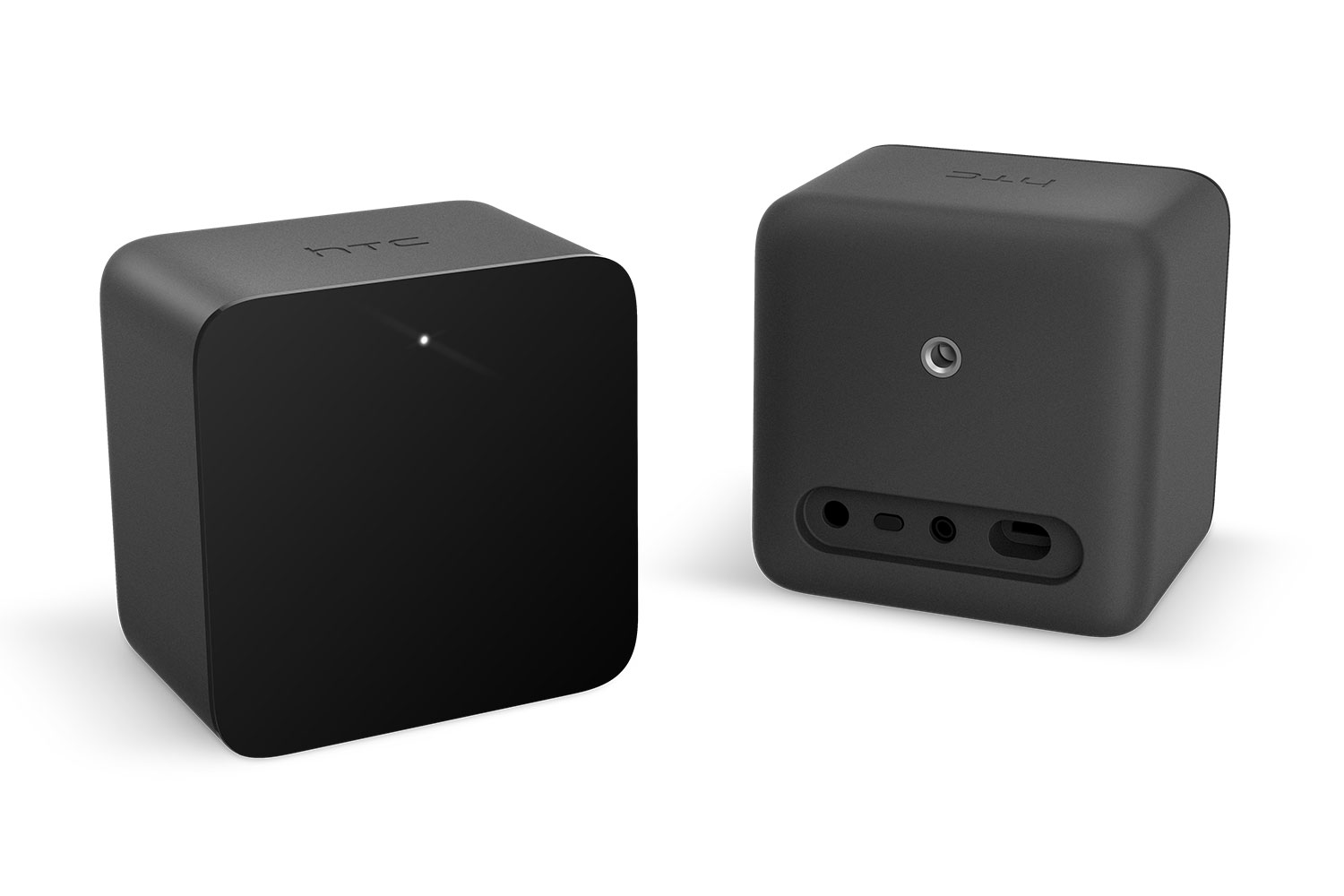Gushing about the HTC Vive is not a new thing for the crew here at Digital Trends. We’ve been enamored with the virtual reality system since we first tried it at Mobile World Congress 2015. One year, and many beta versions later, the Vive is now available for anyone to buy.
Where do I buy it, and how much does it cost?
The Vive can be purchased on HTCVive.com, or through the Steam web store. It will set you back $800 (689 UK, 1149 CAD), plus $30 shipping in the United States. That’s a couple hundred more than the $600 Oculus Rift.
However, the Vive comes with motion controllers and all the hardware needed to use them, while the Rift comes with an Xbox One controller. The Rift’s motion controllers will be sold later, at additional cost.
The Vive is the most advanced VR headset you can buy, and it doesn’t come cheap. But if you’re going to shell out $600 for a Rift, we recommend you spend a bit more for the Vive. More on that below.
What makes Vive different from Oculus Rift?
The Vive and Oculus Rift have different philosophies on high-end VR gaming. The Oculus, which has been in development longer,launched with a headset (without a front camera), a sensor to help with head tracking, and an Xbox controller. Essentially, it is more of a traditional sit-down — but still immersive — video game machine. Oculus does plan to release handheld motion controllers called Oculus Touch, but they will not be out until later in 2016.
The HTC Vive is different. Instead of an Xbox controller, you get two 360-degree motion controllers, and in lieu of a single sensor, you have two laser boxes to track your movement from all angles. While you can play sitting down, HTC and Valve built the Vive on the concept of having you actually walk around in video game worlds, as if you were on a Star Trek holodeck. Your room becomes the games, and you interact with them using the two controllers, which have touchpads on them. The experience is precisely what we’ve always dreamed VR could do, and exactly what it has failed at, until now.
“Go back to the 80s with VR, what did we think it was going to be?” Valve’s Chet Faliszek asked us. “What did you want to do? What kind of experiences did you want to have? We wanted to put you in the center of the action; We wanted to let you interact with that world; We allow those kinds of experiences.”
Thanks to the front-facing camera on the Vive, you can see the outside world if you’d like, and games or apps can be written to augment the real world. Of course, to use it, you need at least a six and a half by five foot area. The more open space you have, the better, up to about 16 x 16 feet.
Comparing Vive to Oculus is a little like comparing the Nintendo Wii to an Xbox or PlayStation. The Wii came with a special motion controller and was built entirely around the idea of motion and movement being a part of gameplay, while the PS3 and Xbox 360 had more traditional controllers. Both of them attempted to add motion later on, but it was somewhat tacked on. Nintendo banked its future on the idea and it was quite successful. And we think HTC and Valve have a far better handle on what gamers like to play than Nintendo sometimes did.
Why choose the Rift instead?
Our review of the Vive is extremely favorable, but there are a few reasons why you might want to pass, and order a Rift instead.
Space is one reason. The Vive should work with experiences that require a sitting user, but full-room VR is the ace up its sleeve. You may find it difficult to use the Vive to its greatest potential if you lack a room that can be cleared of obstacles.
The Rift also has a slightly more robust game line-up. While HTC is in partnership with Valve, the latter company so far has announced any major first-party projects for the Vive. Rift, mean, will has the highly anticipated Eve: Valkyrie. Other high-profile games, like Rock Band VR and Edge of Nowhere, should come in 2016.
What’s in the box, Vive launch games
In the box:
- 1 Vive HMD headset: Upgraded with a better head strap, shinier finish, and two face masks for a better fit. Like the Vive Pre, it has a front-facing camera. Long cables are also included, which are needed since you walk around in VR on the Vive.
- 2 360-degree tracking controllers: With Micro USB charging cables
- 2 laser, wireless base stations: You don’t have to mount them on your wall (as we previously thought), and they come with optional super long wired cables, if you want them. HTC also says it has upgraded the motors and durability of these stations. They each come with an AC adapter.
- Vive Link Box: The middle man between your computer and your Vive.
- 1 set of earbuds: The headset has a mic and the earbuds will give you some basic audio support to help you get immersed.
- Misc power cords and connectors
Launch games
The Vive has two bundled launch games, Fantastic Contraption and Job Simulator.
Fantastic Contraption is a puzzle game about building, well, contraptions. The goal is to use a variety of components to build a virtual machine capable of overcoming an obstacle. Virtual Reality provides the twist. Instead of dragging-and-drops components with a mouse, the player physically attaches parts in virtual space using the Vive’s motion controllers. It’s a unique take on a niche genre that could be re-invented by the new interaction afforded by VR.
The other game included with the Vive is Job Simulator. Its concept is a bit more involved than the title suggests, as it puts the players in the shoes of a citizen who lives in the year 2050. Robots have taken over jobs, so people can only experience what it as like to have one by entering VR. The result is a humorous game filled with sarcastic gags and lots of physics-based quackery. While it’s fun to demo, we’re not sure Job Simulator will be a title worth more than a few hours of attention. It’s also confirmed to show up on other platforms.
In addition to the launch games, Vive will ship with Google’s Tilt Brush, a program that can be used to create 3D art in virtual space using the Vive’s motion controllers. This inclusion is a major win for HTC over Oculus. The latter company is also working on a 3D virtual reality modeling tool, but it won’t be available at least until the Rift’s Touch Controllers ship later in 2016. Vive is getting a jump on its competitor in the race to transform VR from novelty to tool.
All of the launch title are included for a limited time only, though there’s no indication how long it will be until they’re taken out of the bundle.
HTC and Valve reps have told us that new games and apps will be announced at the Game Developer’s Conference in March.
Other confirmed Vive games
The line-up of titles available at launch as expanded to 122, and can be viewed on Steam’s website. This number comes with some qualifications. A large number of the available games aren’t of excellent quality, are early access, or offer extremely limited gameplay. Still, some stand out. These include Elite Dangerous, Univerise Sandbox 2, and Windlands.
What else might hit the Vive?
According to HTC and Valve, the Vive is “more than just about games.” Companies as diverse as Audi and Sleep Number beds have already created some experiences, and there are more non-gaming apps coming. Surgical theater is taking MRIs of people’s heads and then having doctors use the Vive to look inside of people’s brains.
“We can’t reveal all the other ones,” Dan O’Brien, HTC’s VP of VR, told Digital Trends. “We have a lot of non-game partners, but we let them announce when they’re ready to announce their stuff. We don’t want to do it for them. We do have a very healthy number of people in the education space and simulation space. They see the freedom of being able to be in the middle of the content and interacting with it.”
That didn’t stop Valve from revealing a title of its own, called The Lab. It’s a collection of 12 experiments set in the ever-shifting halls of Aperture Science, and the Robot Repair Facility demo we played even featured an appearance from Portal’s antagonist, Glados. In addition, developers have announced titles like Hover Junkers, a post-apocalyptic scavenging survival arena and first person shooter, and there’s even a room-scale Star Wars experience on the way.
What kind of a PC do you need to use Vive?
Here are the recommended PC specs for the HTC Vive:
- Graphics card: Nvidia GeForce GTX 970, AMD Radeon R9 280 equivalent, or greater
- Processor: Intel i5-4590, AMD FX 8350 equivalent, or greater
- RAM: 4GB+
- Video Output: HDMI 1.4, DisplayPort 1.2, or newer
- USB Port: 1x USB 2.0 or greater port
- Operating System: Windows 7 SP1 or newer
Unlike the Rift, which is being released in bundles with major desktop gaming PC builders, the Vive is only sold on its own. However, the Vive’s recommended hardware is almost identical to the Rift, so any PC that is confirmed as “Rift-ready” or “VR-ready” will work with the Vive, too.
It’s worth noting that the specifications above only cover desktop systems. No specifications have been released for laptops. Having reviewed many
HTC recommends a GTX 970 desktop video card. In our past testing, we’ve found the GTX 970 achieves a 3D Mark Fire Strike score of about 9,500, while a laptop with an Nvidia GTX 980M usually hits a Fire Strike score near 8,400. Origin’s EON17-SLX is the only gaming laptop we’ve reviewed in the past year that confidently meets the HTC Vive’s recommended specifications — and only because it crams desktop hardware into a laptop chassis.
A modern laptop quad-core, such a the Core i7-6700HQ, is probably sufficient for the HTC Vive, but it just barely matches the performance of the recommended Intel Core i5-4590.
Overall, it’s not a good idea to buy the Vive (or any VR headset) if you only have a laptop. While some titles will run without issue, there’s not much wiggle room, and more demanding games will probably bring your system to its knees. Common
Now that you have a compatible PC and a headset in front of you, let’s take a look at how to actually set it up.
Setting up your Vive
The first step of setting up any device is ensuring all of the parts listed in the manual were included in the box. Even if this isn’t your first time setting up a PC gaming peripheral, you won’t be prepared for the sheer mass of cables.
Let’s start with trackers. The Vive includes two lighthouse trackers, which wirelessly connect to the system. The tricky part is actually figuring out where to set them up. Room-scale VR requires at least 6-and-a-half by 5 feet of space, with at most 16 feet between base stations. The two trackers should be placed at least 6-and-a-half feet off the ground, pointed down at a 30-to-45 degree angle, with a clear view of one another. There are two mounts for permanently attaching them to the wall, but we used two camera tripods for a more mobile setup. Once both trackers are properly placed and powered up, press the sync buttons on the back until one reads B and the other C.
The headset doesn’t plug directly into the system; it works through a link box that provides dedicated power and acts as a breakaway in case the headset goes too far from the computer. The link box connects to the system via HDMI and USB, and has its own power source. Connect these ports from the computer to the grey side of the link box, plugging in the power last. Leave the link box plugged in so Windows can automatically download relevant drivers.
Once connected, go ahead and plug the cables on the headset into their corresponding ports on the orange side of the link box. There should be three: HDMI, USB, and power.
Once that’s taken care of, install Steam if you haven’t already, and install the SteamVR software, which can be found in the Tools section of the Library tab in Steam. Launch the SteamVR app, and you’ll find status icons representing the two trackers, the headset, and the controllers. It should find the trackers relatively quickly, along with the headset once it’s in view of the trackers. Press the system button under the touchpad on each controller to turn it on. The controllers will automatically connect to the headset, and come out of the box somewhat charged for first use.
After everything is connected, it’s simply a matter of configuring the room setup through the included software. If this is your first time setting up a Vive, it will automatically walk you through the process. If not, clicking the arrow in SteamVR and selecting “Run Room Setup” starts the process anew.
There are a few options for launching Vive games. SteamVR games can be launched directly from the SteamVR sub menu in the library tab. Alternatively, launching the SteamVR tool shows the status of all the devices on the monitor, and turns on the headset, which includes its own Steam client and library browser.
[amz_nsa_keyword keyword=”VR Headset”]

